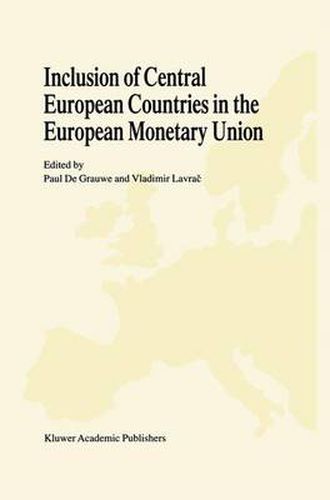Readings Newsletter
Become a Readings Member to make your shopping experience even easier.
Sign in or sign up for free!
You’re not far away from qualifying for FREE standard shipping within Australia
You’ve qualified for FREE standard shipping within Australia
The cart is loading…






This title is printed to order. This book may have been self-published. If so, we cannot guarantee the quality of the content. In the main most books will have gone through the editing process however some may not. We therefore suggest that you be aware of this before ordering this book. If in doubt check either the author or publisher’s details as we are unable to accept any returns unless they are faulty. Please contact us if you have any questions.
The creation of the European Economic and Monetary Union (EMU) and the introduction of the euro is a historical event for the EU countries. The debates on the desirability of the EMU provoked a vast economic literature dealing with the theory of the optimum currency area, costs and benefits of the EMU, symmetric vs. asymmetric shocks, alternative mechanisms of adjustment in a monetary union and so forth. Until recently, for the Central European candidate countries for a full membership in the EU, these issues seemed to be too far away, as they concentrated on devising their own monetary and exchange rate systems suitable for their transition period. The challenges of the EMU for the Central European countries were practically not dealt with in both Western and Eastern economic literature. The present book aims to fill this gap, by focusing on the most direct issue of relevance for the Central European countries with respect to the EMU - why, how and when these countries are expected to join the EMU. The papers included in this volume study the relationship between the EU accession process of the Central European candidate countries and their involvement in the process of European monetary integration.
$9.00 standard shipping within Australia
FREE standard shipping within Australia for orders over $100.00
Express & International shipping calculated at checkout
This title is printed to order. This book may have been self-published. If so, we cannot guarantee the quality of the content. In the main most books will have gone through the editing process however some may not. We therefore suggest that you be aware of this before ordering this book. If in doubt check either the author or publisher’s details as we are unable to accept any returns unless they are faulty. Please contact us if you have any questions.
The creation of the European Economic and Monetary Union (EMU) and the introduction of the euro is a historical event for the EU countries. The debates on the desirability of the EMU provoked a vast economic literature dealing with the theory of the optimum currency area, costs and benefits of the EMU, symmetric vs. asymmetric shocks, alternative mechanisms of adjustment in a monetary union and so forth. Until recently, for the Central European candidate countries for a full membership in the EU, these issues seemed to be too far away, as they concentrated on devising their own monetary and exchange rate systems suitable for their transition period. The challenges of the EMU for the Central European countries were practically not dealt with in both Western and Eastern economic literature. The present book aims to fill this gap, by focusing on the most direct issue of relevance for the Central European countries with respect to the EMU - why, how and when these countries are expected to join the EMU. The papers included in this volume study the relationship between the EU accession process of the Central European candidate countries and their involvement in the process of European monetary integration.